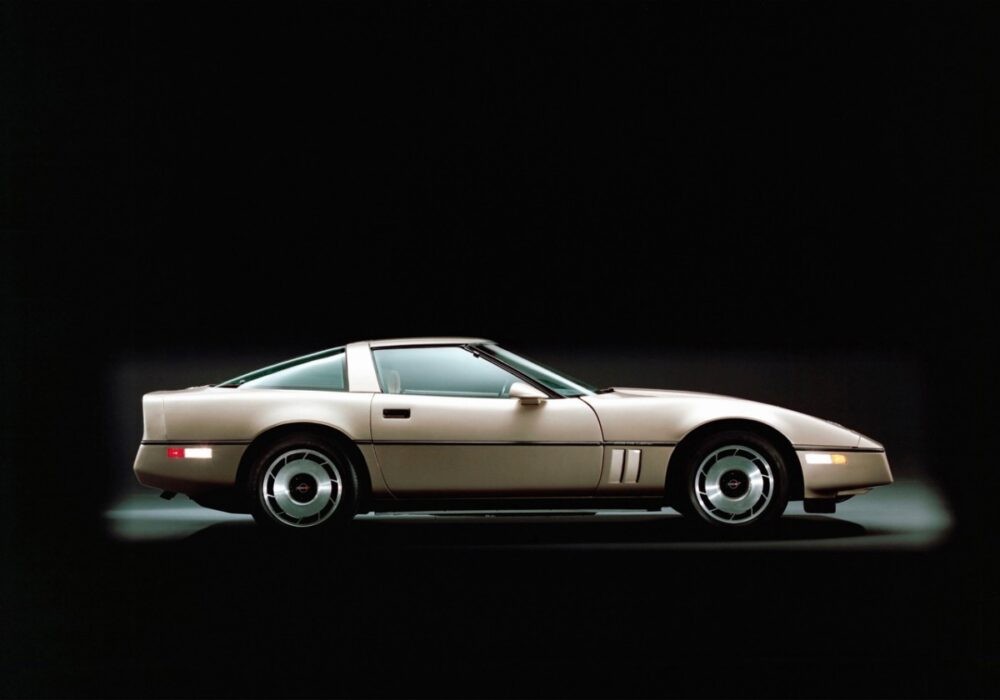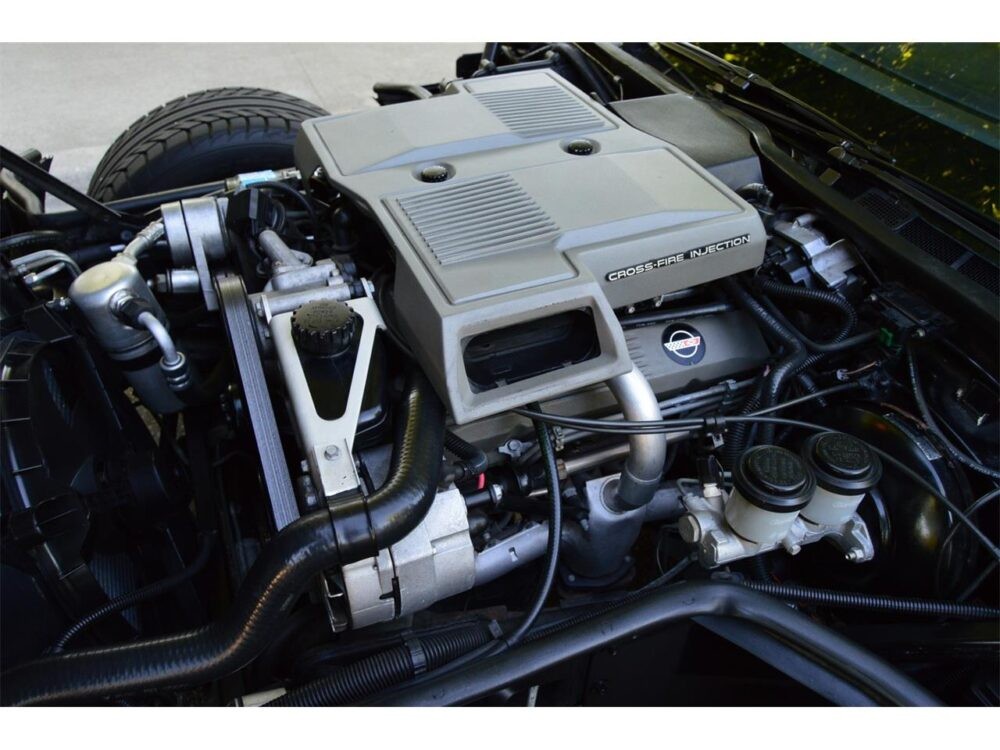The 1984 Corvette holds a unique, and sometimes unflattering, place in automotive history. While celebrated as a technological leap forward and a design icon, it often carries the label of the “worst Corvette ever made.” For enthusiasts and mechanics alike, understanding why the ’84 C4 gets this reputation is crucial, and knowing how to address its shortcomings is even more valuable.
 Front view of a silver 1984 Chevrolet Corvette C4, highlighting its iconic wedge shape and pop-up headlights, a groundbreaking design for its time.
Front view of a silver 1984 Chevrolet Corvette C4, highlighting its iconic wedge shape and pop-up headlights, a groundbreaking design for its time.
Many Corvette aficionados will point fingers at the later C3 generation, particularly the smog-era models of the late 70s and early 80s. However, the 1984 Corvette, the inaugural year of the C4 generation, presents a different set of challenges that earn it this dubious distinction. Let’s delve into why this otherwise groundbreaking car sometimes disappoints and, more importantly, explore how to rectify its weaknesses.
The Promise and the Problems of the 1984 Corvette
Imagine the anticipation in 1984. The C3 Corvette, while beloved, was aging. The C4 was a complete departure – sleek, modern, and brimming with technology. Digital dashboards, advanced suspension, and a fresh silhouette promised a new era of Corvette performance. For a young car enthusiast, seeing an ’84 Corvette was like glimpsing the future of driving.
However, the reality behind the wheel often didn’t match the futuristic hype. The 1984 Corvette, while visually stunning and technologically ambitious, suffered from being rushed to market. The most significant culprit was the L83 350 cubic inch V8 engine equipped with Cross-Fire fuel injection. This system, while innovative in concept, proved to be a major bottleneck.
Drivers often reported sluggish acceleration, hesitation, and an overall lack of responsiveness. The automatic transmission, the only option available in ’84, further exacerbated these issues with its widely spaced gear ratios. Coupled with the notoriously stiff ride, especially with the Z51 performance suspension, the initial impression of the 1984 Corvette was often one of unfulfilled potential. Compared to later C4 iterations, the ’84 model could feel unrefined and underpowered.
The core issue was that the 1984 Corvette felt unfinished. It was a car that desperately needed more development time. Had Chevrolet delayed its release by a year and launched it with the improved L98 engine, the narrative around the ’84 Corvette might be very different. The Cross-Fire injection system, intended to be a step forward, became its Achilles’ heel.
Fixing the Flaws: Upgrading Your ’84 Corvette
Fortunately, the shortcomings of the 1984 Corvette are not insurmountable. For those who appreciate the C4’s styling and chassis but desire more performance, several effective upgrades can transform an ’84 Corvette into a truly enjoyable machine.
 Close-up of the L83 Cross-Fire Injection engine in a 1984 Corvette, showcasing the throttle body injection system that contributed to performance issues in the early C4 models.
Close-up of the L83 Cross-Fire Injection engine in a 1984 Corvette, showcasing the throttle body injection system that contributed to performance issues in the early C4 models.
The most impactful improvement revolves around addressing the Cross-Fire injection. While a comprehensive guide to troubleshooting Cross-Fire is beyond the scope here, understanding the limitations of this system is key. Several paths can be taken:
- Engine Swap: The most radical, but arguably most effective solution, is an engine swap. Popular choices include swapping in a later L98 engine from a newer C4 Corvette or opting for a modern LS series crate engine. These swaps provide a significant power increase and vastly improved reliability.
- Carburetor Conversion: A less complex approach involves removing the Cross-Fire injection and installing a traditional four-barrel carburetor and intake manifold. While more straightforward than an engine swap, this conversion still requires careful consideration of ignition timing and fuel delivery to avoid creating new problems.
- Exhaust and Intake Modifications: For a more moderate approach, upgrading the exhaust system with performance headers and a less restrictive exhaust can improve engine breathing. Porting the intake manifold, which was intentionally restricted by GM to improve low-speed drivability, can also unlock hidden horsepower. These modifications, while not completely solving the Cross-Fire limitations, can noticeably enhance performance.
Beyond the engine, the 1984 Corvette’s suspension can also be improved. Replacing the original shocks and springs, particularly on Z51 equipped cars, with modern performance shocks or coil-overs can dramatically improve ride quality without sacrificing handling. Polyurethane bushings can further sharpen handling and responsiveness, tapping into the inherent potential of the C4 chassis that dominated showroom stock racing in its era.
The Enduring Appeal of the C4 Corvette
Despite its initial flaws, the 1984 Corvette laid the foundation for a successful generation of Corvettes. Each subsequent year of the C4 saw improvements in performance, refinement, and features. The C4 generation, as a whole, evolved into a comfortable, capable, and relatively affordable sports car.
While the 1984 Corvette might not be the pinnacle of the C4 lineage in its stock form, it represents a significant milestone in Corvette history. With targeted upgrades, the ’84 Corvette can be transformed from a perceived “worst” into a unique and rewarding classic sports car. For those willing to invest some time and effort, the 1984 Corvette offers an entry point into Corvette ownership with tremendous potential for personalization and improvement.
For further insights and detailed guidance on modifying your C4 Corvette, especially the 1984 model, the Corvette Forum remains an invaluable resource. You’ll find a wealth of knowledge and shared experiences from fellow enthusiasts tackling everything from Cross-Fire issues to full-blown performance builds.
Join the Corvette Forums now!
